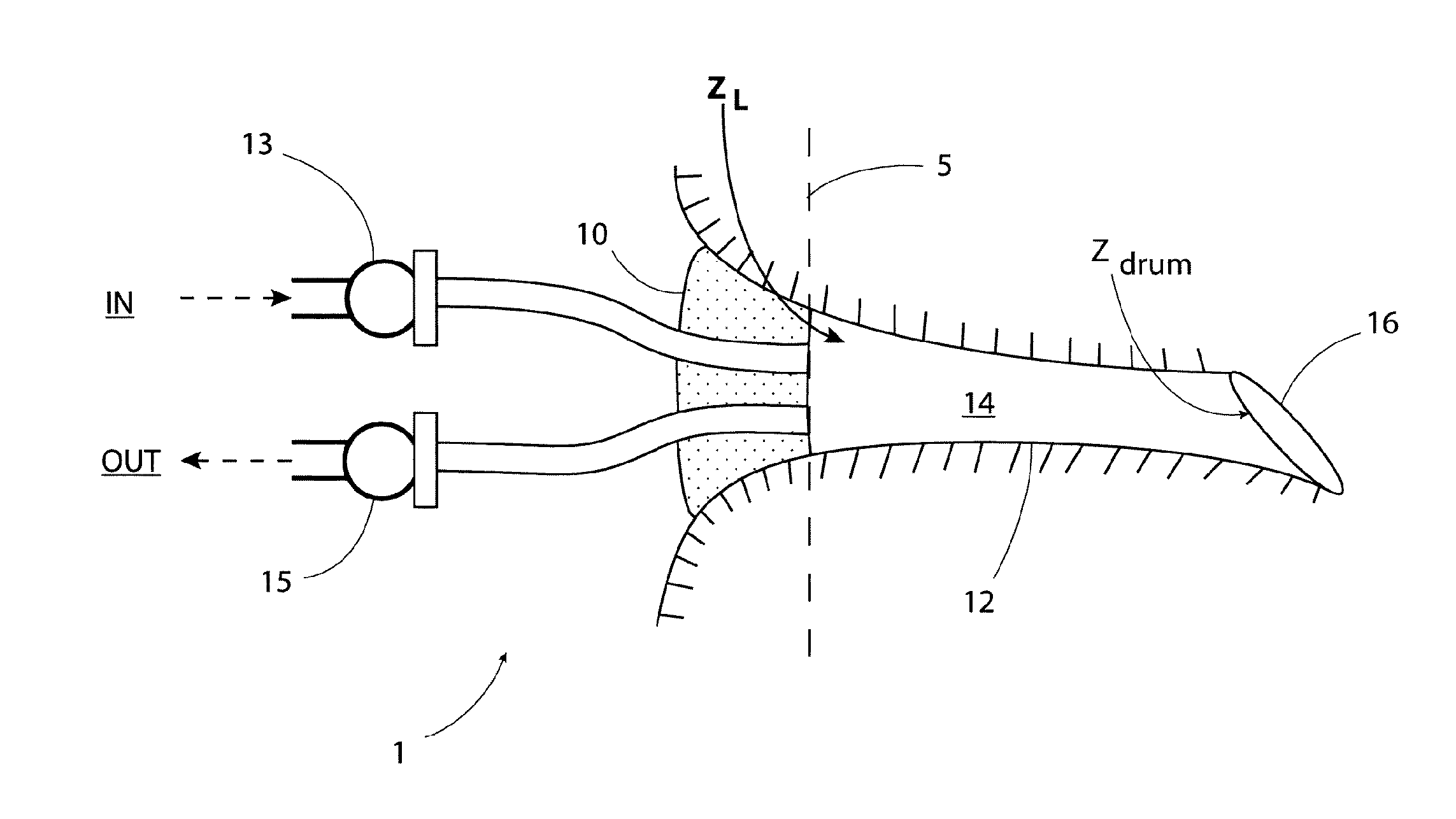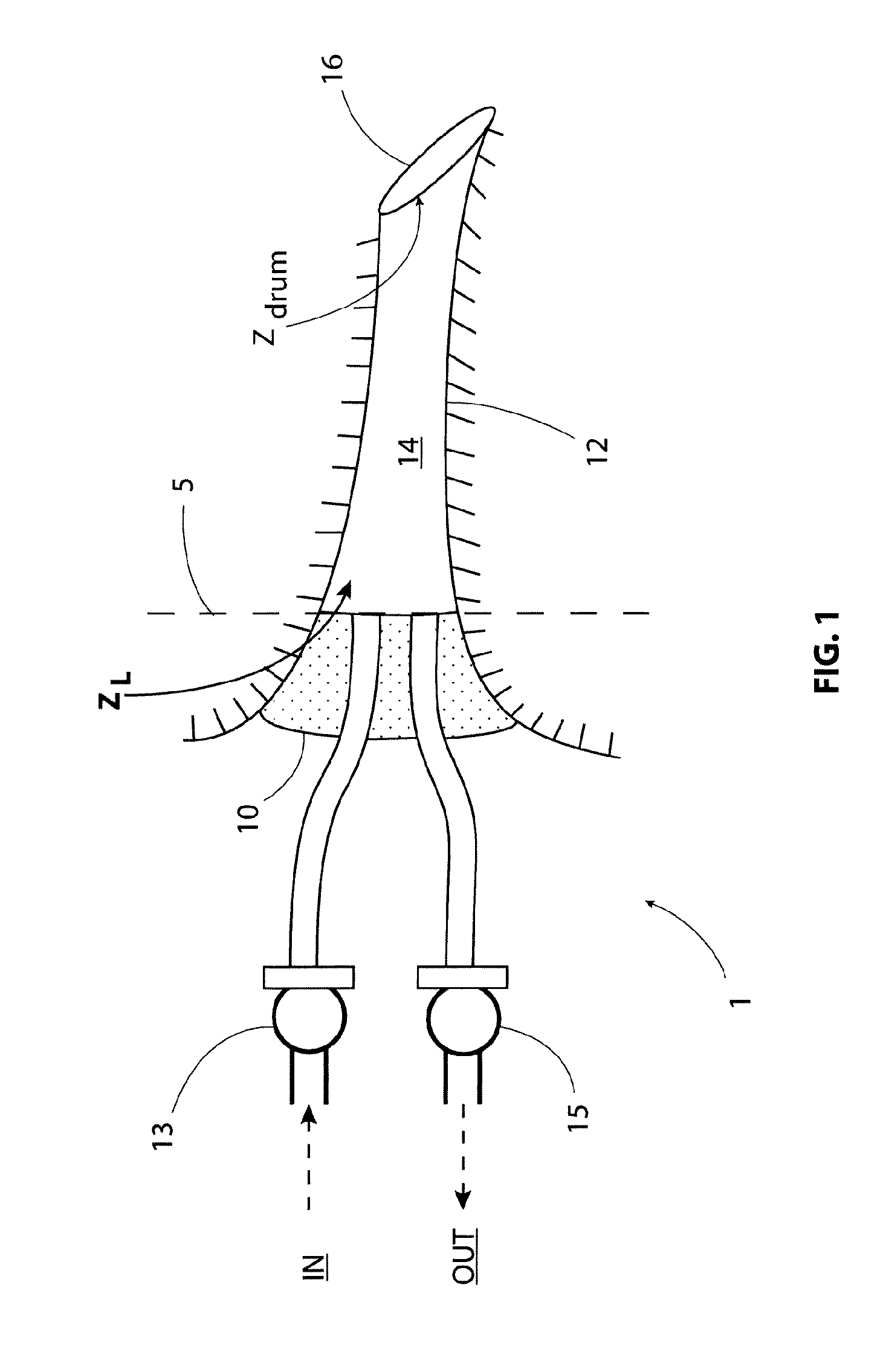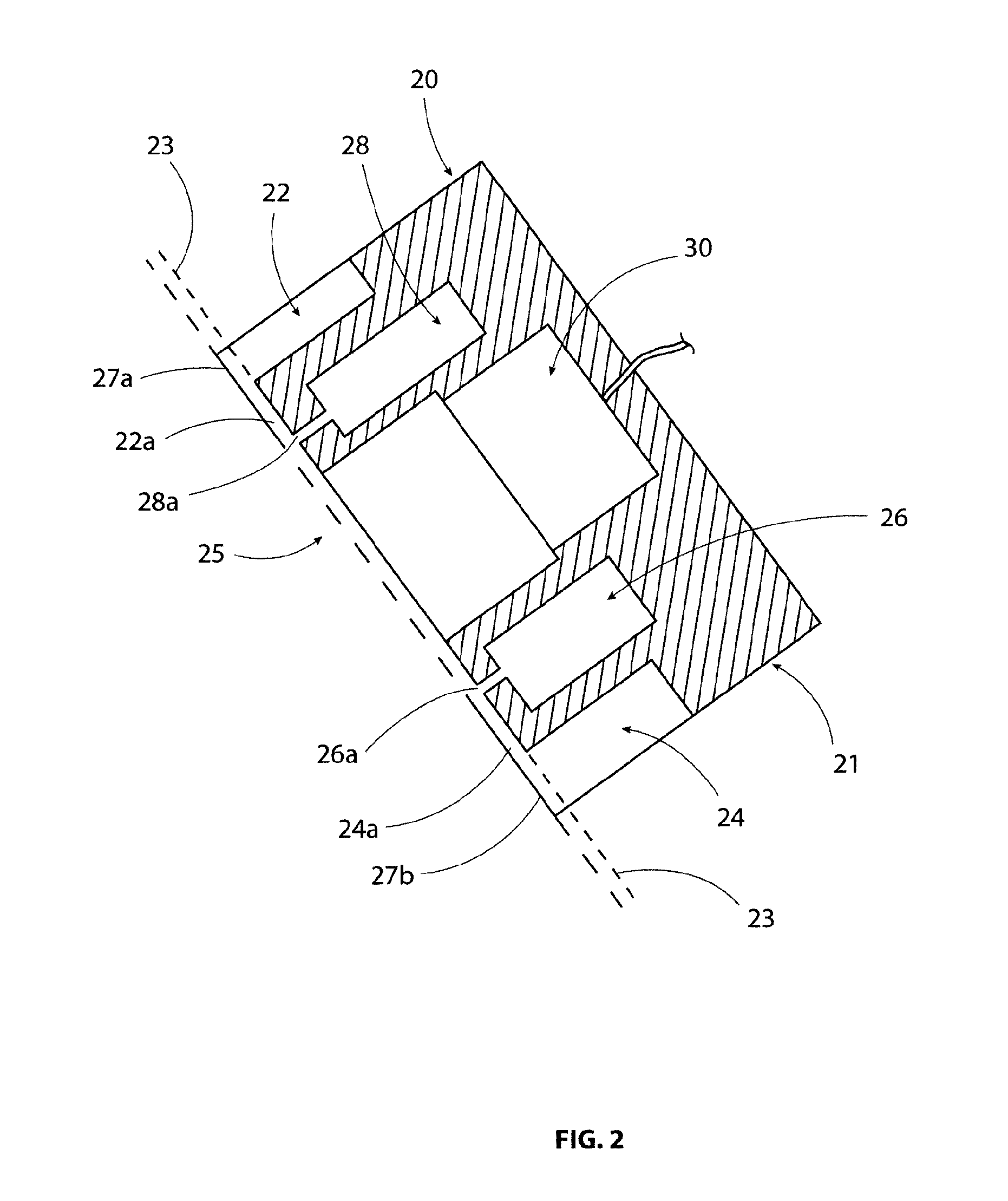Human like ear simulator
a human-like ear simulator and simulator technology, applied in the field of simulators, can solve the problems of large errors easily introduced, inaccurate orientation of the measurement plane, and inability to verify the average input or transfer impedance of real human ear canals, so as to achieve accurate measurement and computation of acoustic ear canal impedances, accurate modeling
- Summary
- Abstract
- Description
- Claims
- Application Information
AI Technical Summary
Benefits of technology
Problems solved by technology
Method used
Image
Examples
Embodiment Construction
[0038]The present determination of individual ear drum impedances of human test subjects may be based on numerous different ear canal scanning methodologies. The methodologies comprise contact-less scanning such as extracting individual geometries of human ear canals by infra-red scanning and / or ultrasound scanning. Other suitable contact-less ear canal scanning methodologies comprise CT scanning of the test subject's ear canal or MR scanning of the test subject's ear canal with a suitable contrast agent injected in the ear canal during MR scan. However, care must be taken to achieve accurate results in view of the current technology state. Another group of ear canal scanning methodologies comprises the application of known ear canal impression techniques. This group may include injecting a wax or similar liquid impression material or agent, such as Silicone Singles® (Silicast in single form) or Silicast®, into the test subject's ear canal where it is hardened and subsequently retra...
PUM
 Login to View More
Login to View More Abstract
Description
Claims
Application Information
 Login to View More
Login to View More - R&D
- Intellectual Property
- Life Sciences
- Materials
- Tech Scout
- Unparalleled Data Quality
- Higher Quality Content
- 60% Fewer Hallucinations
Browse by: Latest US Patents, China's latest patents, Technical Efficacy Thesaurus, Application Domain, Technology Topic, Popular Technical Reports.
© 2025 PatSnap. All rights reserved.Legal|Privacy policy|Modern Slavery Act Transparency Statement|Sitemap|About US| Contact US: help@patsnap.com



